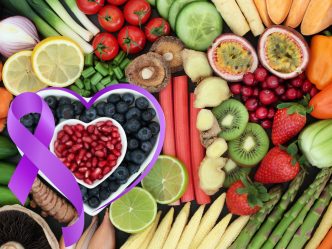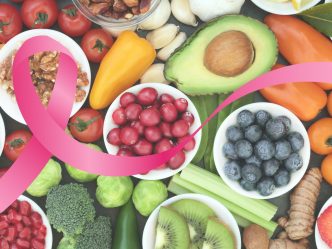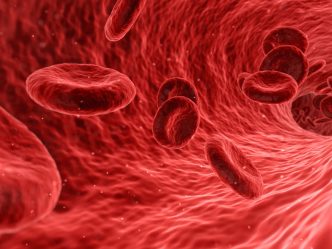The American Heart Association says that adults should have no more than 2,300 milligrams of salt per day—and ideally closer to 1,500 milligrams per day.
But in a world where bigger is always better, most of us eat more like 3,400 milligrams of salt per day—nearly double that amount.
That’s like downing one and a half whole teaspoons of salt every day.
If that’s not enough to make your mouth pucker, then consider this: Eating too much salt causes our bodies to hold onto more water in order to dilute the sodium in our bloodstream. That makes our blood vessels and heart work harder. Over time, vessels get stiffer, and we get high blood pressure, along with a higher risk of heart attack, stroke and heart failure. Studies have even shown that too much salt can hurt our kidneys and bones, too.
The answer? It goes right back to the food we eat. “Everyone should be aware of what we’re putting into our bodies,” said Amber Fentress, a registered dietitian at Augusta University Health. “Especially if you already have high blood pressure or have a family history of hypertension—or if you’re simply interested in lowering your sodium—the DASH diet may be a good place to start.”
A diet to reduce sodium?
DASH—or Dietary Approaches to Stop Hypertension—is a diet that’s specially designed to treat high blood pressure. It works in two ways: It reduces the amount of sodium you eat (along with sugar and saturated fat) and boosts important nutrients that work to lower blood pressure, including potassium, calcium and magnesium.
According to experts, the diet can also help reduce the risk of osteoporosis, cancer, heart disease, stroke and diabetes.
Here’s how it works: There are two levels of DASH, one with a 2,300-mg limit on sodium and one with a 1,500-mg limit. Foods include:
Grains: 6 to 8 servings a day
A serving is:
- 1 slice of whole-wheat bread
- ½ cup cooked brown rice
- ½ cup cooked whole-grain pasta
- ½ cup cooked oatmeal
Vegetables: 4 to 5 servings a day
Focus on fresh or frozen vegetables. Or look for canned versions labeled low-sodium or without added salt. Good options are tomatoes, carrots, broccoli, sweet potatoes and greens.
A serving is:
- 1 cup raw leafy green vegetables
- ½ cup cut-up raw or cooked vegetables
Fruits: 4 to 5 servings a day
Note: Citrus fruits like grapefruit can interact with certain blood pressure and other medications, so check with your doctor.
A serving is:
- One medium whole fruit
- ½ cup fresh, frozen or canned fruit (look for fruit packed in juice, not syrup)
Dairy: 2 to 3 servings a day
A serving is:
- 1 cup skim or 1 percent milk
- 1 cup low-fat yogurt (look for versions with less added sugar)
- 1.5 ounces part-skim cheese (but note that cheeses can be high in sodium)
Lean meat, poultry and fish: 2 servings a day
Cook meats by baking, grilling or roasting, instead of frying.
A serving is:
- The size of your palm or a deck of cards
Nuts, seeds and legumes: 4 to 5 servings a week
For example: almonds, sunflower seeds, kidney beans, peas or lentils
A serving is:
- 1/3 cup nuts
- 2 tablespoons seeds
- ½ cup cooked beans or peas
Fats and oils: 2 to 3 servings a day
Fat helps your body absorb vitamins and boosts the immune system, but you don’t need much.
A serving is:
- 1 teaspoon margarine
- 1 tablespoon mayonnaise
- 2 tablespoons salad dressing
Sweets: 5 servings or fewer a week
A serving is:
- 1 tablespoon sugar, jelly or jam
- ½ cup sorbet
“The focus of DASH is on whole, healthy foods,” said Fentress, “and not eating a lot of processed foods or fried foods, which contain not just high sodium but also trans and saturated fats. Those are things that are going to contribute to your overall health as well.”
Try it for two weeks—Then stick with it
The DASH diet is a lifestyle change, emphasizes Fentress, not a quick fix. But patients can get positive reinforcement almost right away since many see a change after trying the diet for just two weeks.
“Your blood pressure can drop,” she said. “You’ll start to feel better and have more energy. It might be easier to breathe since you’re not having fluid accumulation.”
But the biggest trick to help the diet work, said Fentress, is to do it in a way that’s realistic for you. “It’s not a one-diet-fits-all approach,” she said. “Some patients may not be able to do all the recommendations at first. But we want them to take a step in the right direction.”
When she works with patients, Fentress asks them to start with just three goals. Those could include not putting salt on the table, focusing on cooking meals at home for a majority of the week, choosing unseasoned frozen vegetables or low-sodium canned vegetables, or even just not adding salt to pasta water or vegetables when cooking.
Once you’ve weaned yourself off some of the sodium, then it’s time to make other changes. Patients who have been hospitalized for high blood pressure or heart disease might notice that their hospital provides a seasoning blend instead of salt on their meal trays. Fentress encourages patients to use the same or a similar seasoning blend at home in their cooking. “Just because it’s low sodium doesn’t mean it doesn’t have flavor,” she said. “You just have to be a little more creative in how you season your food.”
You can even bring seasoning blends with you to restaurants. “Don’t be afraid to ask them not to season your steamed broccoli or other vegetables, so you can do it yourself,” said Fentress.
Still, eating at home usually means lower sodium, as long as you control how much salt you cook with. But if you find the idea of cooking a meal every night overwhelming, Fentress advises starting slow and visiting the American Heart Association as a resource for easy-to-cook recipes (and our recipe section too😉). Then make a plan for the week, put your shopping list together, and if possible, cook on the weekends so you only need to reheat or defrost a healthy meal after a busy workday.
As you put ingredients together, make it a habit to check labels. Condiments, salad dressings and marinades, for example, can contain a lot of sodium, and those grams add up.
“A good rule of thumb if you have hypertension or heart disease is if an ingredient has 300 milligrams or more of sodium, to limit that ingredient,” Fentress said. “The goal is to keep each meal between 500 and 1,000 milligrams of sodium.”
While the first thing you might notice after being on the diet is that you feel healthier, Fentress said the benefits get even better in the long run. “It’s empowering when you take care of yourself,” she said. “It’s not just a diet; at the end of the day, you’re in control. You’re able to positively or negatively impact your quality and longevity of life.”





